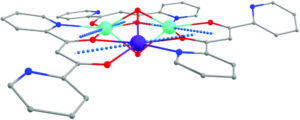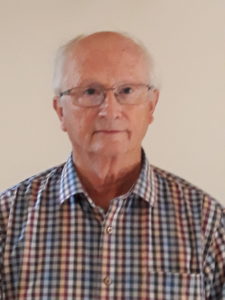Prof. Keith Murray and Dalton Transactions
This year, we are celebrating the 50th volume of Dalton Transactions by taking a look at some of our authors who have published over 50 articles in the journal. This week we learn what Dalton Transactions means to Professor Keith Murray.
Our author at a glance:
Professor Keith Murray’s research at Monash University, Australia, is focused on molecular magnetism and spin crossover. He chooses to publish with Dalton Transactions as the journal is dedicated to publishing “the finest inorganic chemistry in the UK and worldwide” and describes his experience publishing in Dalton Transactions over the years as a “happy and satisfying one”.
Please can you summarise your most recent research published in Dalton Transactions?
Lanthanoid pyridyl-β-diketonate ‘triangles’. New examples of single molecule toroics. This paper, with Dr Rebecca Fuller, describes a collaborative project dealing with new examples of triangular lanthanoid(III) complexes displaying single molecule toroidal behaviour. The syntheses and structures are by Rebecca and group, the magnetism by my group and the theory by Rajaraman and group.
How do you intend to expand upon your research in the future?
At this stage in my 55 year research career I will concentrate on collaborative projects dealing with molecular based magnetic materials, with emphasis on single molecule toroics, and with spin switching materials.
You’ve published over 50 articles in Dalton Transactions, which of these works do you find to be most interesting/significant for our broad inorganic audience?
This paper is classified as “HOT” and contains a nice balance of compound design, synthesis, magnetism, photomagnetism, spin switching and theory.
Outside of your own research, please suggest a Dalton Transactions article which you think has made a significant contribution to its field?
It is hard to single out one of many Dalton Transactions articles. Going back to J. Chem. Soc. A days, Geoffrey Wilkinson always wrote ‘straight across’ papers that contained key findings in metal catalysis chemistry. He didn’t need to “dress up” his papers.
What advice do you have for young researchers new to your field?
In the molecular magnetism field; work hard, get research grants and instrument grants (e.g. Squid magnetometers); attend and present at conferences thus widening their international networks; most importantly – support the research students including helping them to get jobs/fellowships post-thesis.
What does Dalton Transactions mean to you?
It represents the finest inorganic chemistry in the UK and worldwide. My first papers in Dalton (J. Chem. Soc. A) were in 1967.
Why do you choose to publish in Dalton Transactions?
See above. Being aware of impact factors, I see Dalton Trans. in the same group as Inorg. Chem., Chem Eur J., Eur. J. Inorg. Chem., Chem. Mater. and J. Mater. Chem.
Incidentally, John Dalton was born near where I was brought up in Eaglesfield, Cumbria.
What is your experience of publishing with Dalton Transactions?
My experience has always been a happy and satisfying one.
You can check out Keith’s most recent Dalton Transactions article on lanthanoid pyridyl-β-diketonate ‘triangles’. New examples of single molecule toroics below.

Lanthanoid pyridyl-β-diketonate ‘triangles’. New examples of single molecule toroics
Chiara Caporale, Alexandre N. Sobolev, Wasinee Phonsri, Keith S. Murray, Abinash Swain, Gopalan Rajaraman, Mark I. Ogden, Massimiliano Massi and Rebecca O. Fuller*
Dalton Trans., 2020, 49, 17421-17432
Check out the full collection of recent research published in Dalton Transactions by all of our featured Golden Authors in our Celebrating our Golden Authors collection.











